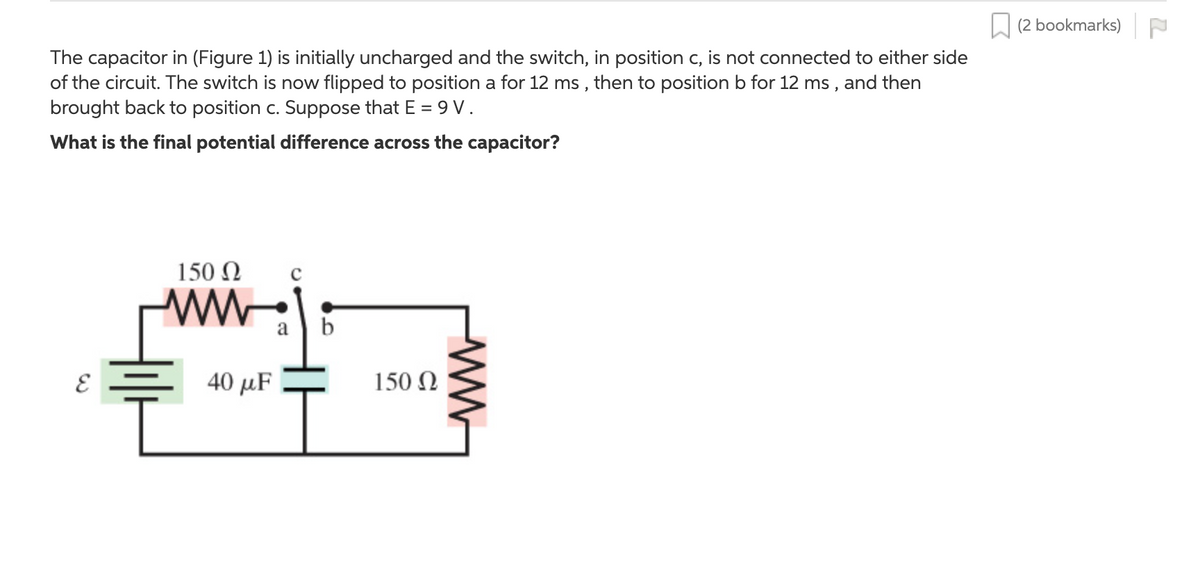The capacitor in (Figure 1) is initially uncharged and the switch, in position c, is not connected to either side of the circuit. The switch is now flipped to position a for 12 ms , then to position b for 12 ms , and then brought back to position c. Suppose that E = 9 V. What is the final potential difference across the capacitor?
The capacitor in (Figure 1) is initially uncharged and the switch, in position c, is not connected to either side of the circuit. The switch is now flipped to position a for 12 ms , then to position b for 12 ms , and then brought back to position c. Suppose that E = 9 V. What is the final potential difference across the capacitor?
Related questions
Question
The capacitor in the figure is initially uncharged and the switch is at position c and not connected to either side of the circuit. At t = 0, the switch is flipped to position a for 20 ms, then flipped to position b for 10 ms, flipped back to position a for 20 ms again, and finally flipped to position c. Find the graph of the current through and the voltage across the capacitor as functions of time.

Transcribed Image Text:L (2 bookmarks)
The capacitor in (Figure 1) is initially uncharged and the switch, in position c, is not connected to either side
of the circuit. The switch is now flipped to position a for 12 ms , then to position b for 12 ms , and then
brought back to position c. Suppose that E = 9 V.
What is the final potential difference across the capacitor?
150 Ω
ww
a b
40 μ
150 N
Expert Solution
This question has been solved!
Explore an expertly crafted, step-by-step solution for a thorough understanding of key concepts.
This is a popular solution!
Trending now
This is a popular solution!
Step by step
Solved in 2 steps with 2 images
